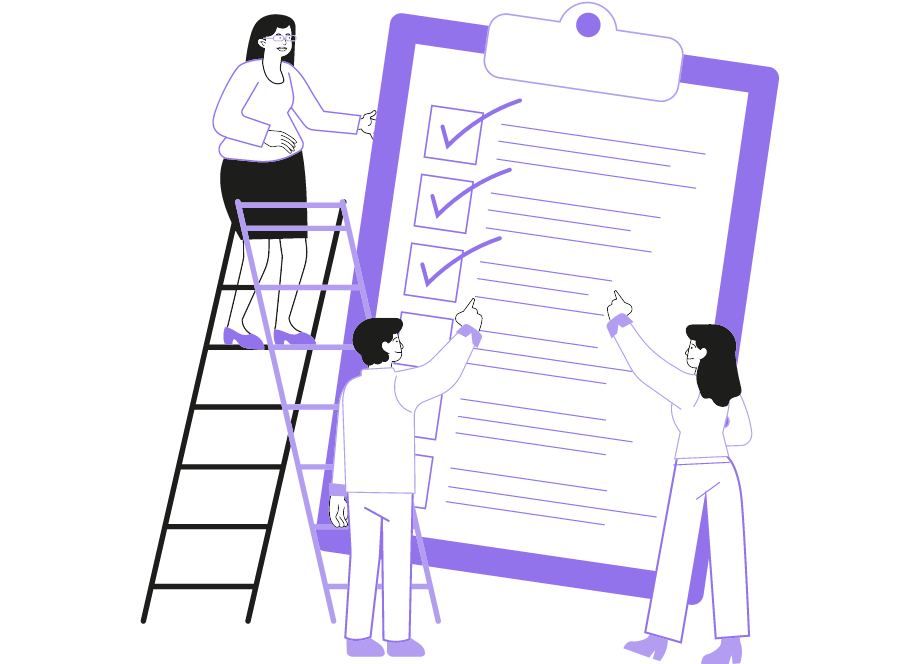
If your application is nearing the end of its development cycle, you might start thinking about launching a beta test program as one of the last steps before releasing your product.
Beta testing is essential to development, as users can test your app in a realistic environment and give valuable insight into what can be fixed or improved.
To create a successful beta program, make sure you have a well-thought-out plan to make things more efficient and get the most out of this part of the development process.
In this article, we will help you plan your beta test by presenting some important tips you might wish to consider while you’re in the planning stage.
Table of Contents
Complete alpha testing before moving on
While thinking about how you will plan and organize your beta testing phase, you should ensure you aren’t rushing and skipping any steps in the development process.
What do we mean by this?
Beta testing is usually the last phase before you release your app—what comes before it is alpha testing.
Alpha testing is an in-house process aiming to uncover the most obvious bugs and issues in your software, so that your developers can address them before the product launch.
The ways you conduct alpha and beta tests are illustrated below, along with the differences between them.
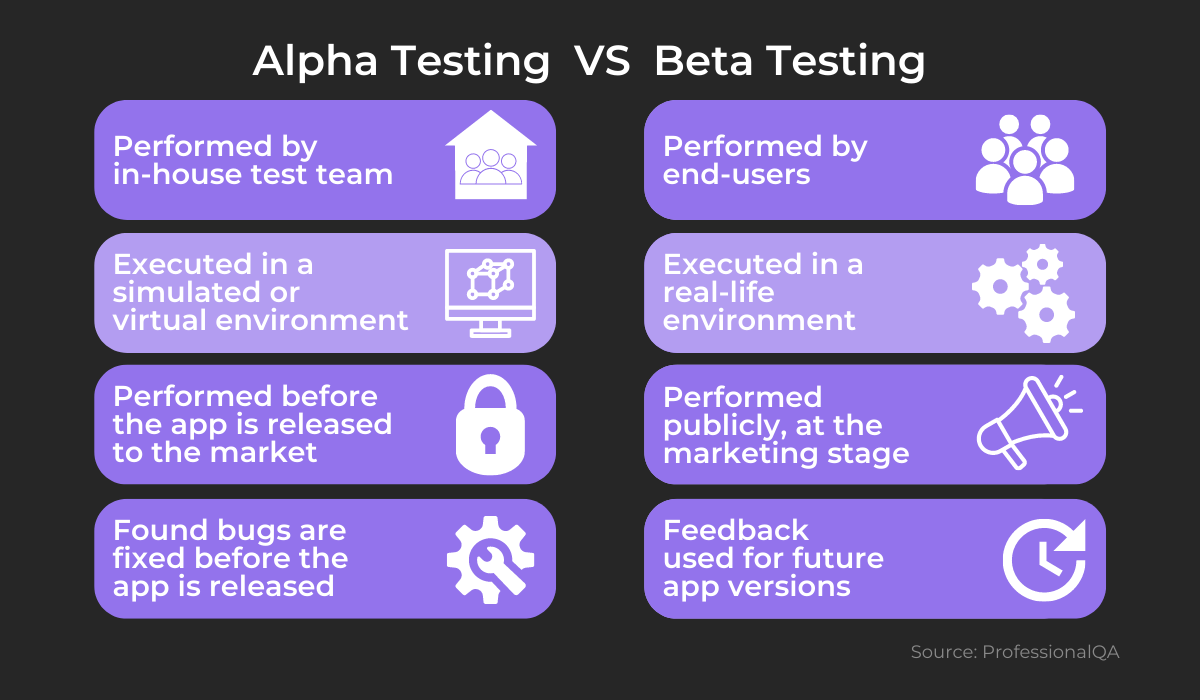
As you may notice, these two phases complement each other.
One is an in-house procedure used for detecting and fixing bugs during development, while the other is a final user evaluation of your product before release.
To make the most of these two phases, you should finish the alpha phase before implementing your beta test program.

Get unreal data to fix real issues in your app & web.
Proper in-house testing ensures that your app doesn’t have any severe and apparent bugs that should be fixed before your users start testing the app.
Failing to do so and beginning beta testing before you complete the alpha testing can introduce some issues and make it harder to gain the benefits from the beta test.
Without the alpha testing, your app won’t be fully complete and thoroughly tested, so beta testers may have to face a lot of defects, making their testing process difficult and frustrating.
To ensure you are starting your beta test at the proper time, consider these criteria:
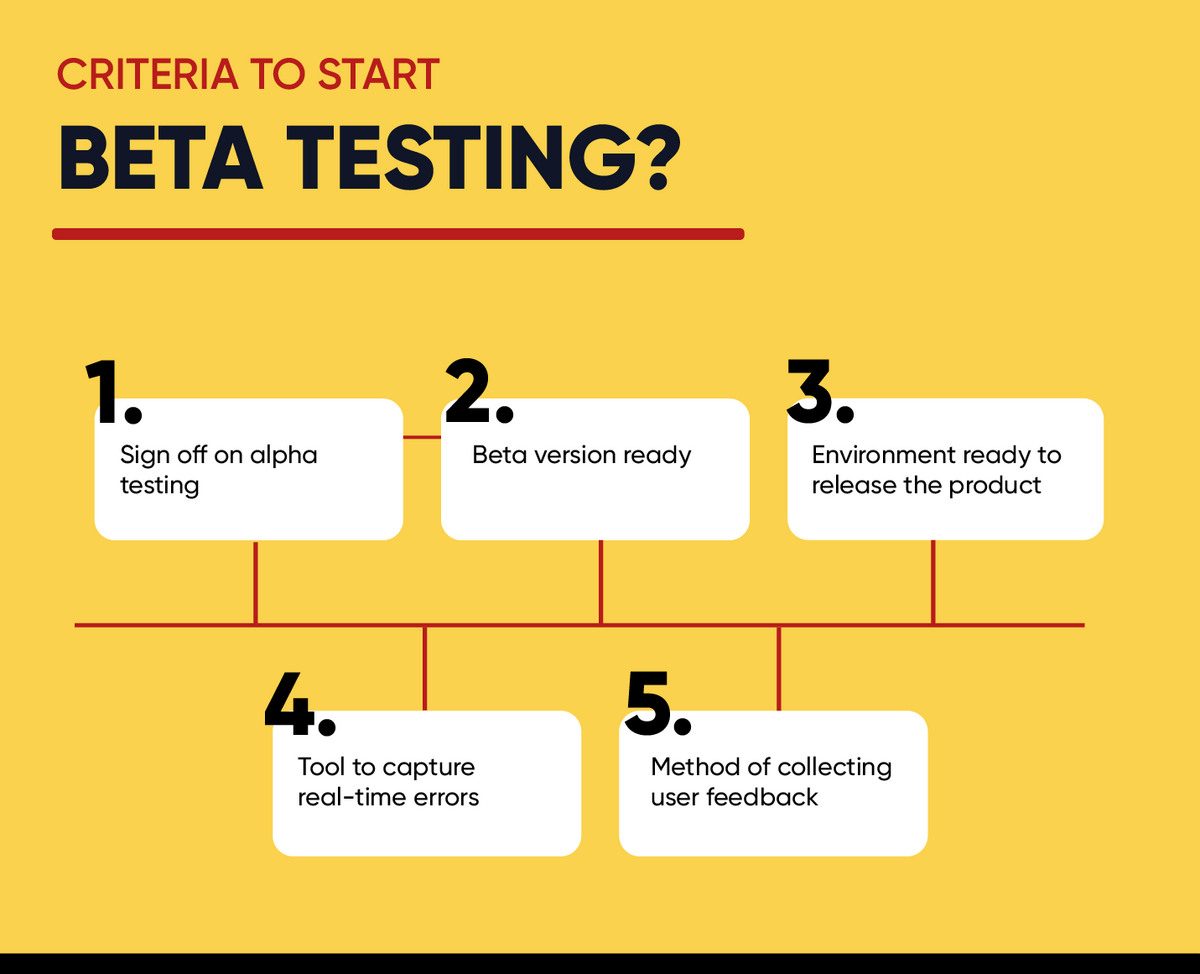
Beta testers should get a stable product so they can effectively test your application while having the right tools to capture and report bugs in real-time, giving your company valuable feedback as a result.
Therefore, beta testing is not supposed to replace the rigorous testing process your company’s test team should perform to find defects in your application.
So, given all these points, you will want to ensure the alpha testing phase is completely over before moving on to the beta testing, as this practice will help you use the beta phase most effectively.
Determine who your beta testers will be
One of the essential things to consider before running your beta testing program is defining who you will enlist as beta testers.
Instead of accepting anyone to be a beta tester regardless of their characteristics, you might want to filter them and accept those individuals who can provide relevant and useful information to your company. In other words, it’s best to focus on your target audience.
Your target audience includes the people most likely to be interested in your application after it’s released, in other words, the ones who might eventually become your loyal customers.
Having beta testers that match your target audience is an excellent way to gain feedback from people who could end up using your app.
There are two types of characteristics you might want to consider when defining this group of people: demographic and psychographic.
Demographic characteristics are commonly used when defining a target audience and they consist of some standard objective descriptive attributes we can assign to people.
These can include:
- Age
- Sex
- Income
- Location
- Occupation
- Marital status
- Education
You can collect the data for these characteristics from multiple sources: they can be given to you by clients, you can look at the audiences of your competitors, perform market research, etc.
One good way to collect demographic data is by conducting a survey. For that, you can use pre-made templates from sites such as SurveyMonkey.
Through psychographic characteristics, on the other hand, you classify people based on psychological criteria—concentrating on emotions and motivation as well as additional subjective information about your customers.
You can get a better picture of these characteristics by comparing them with demographics:
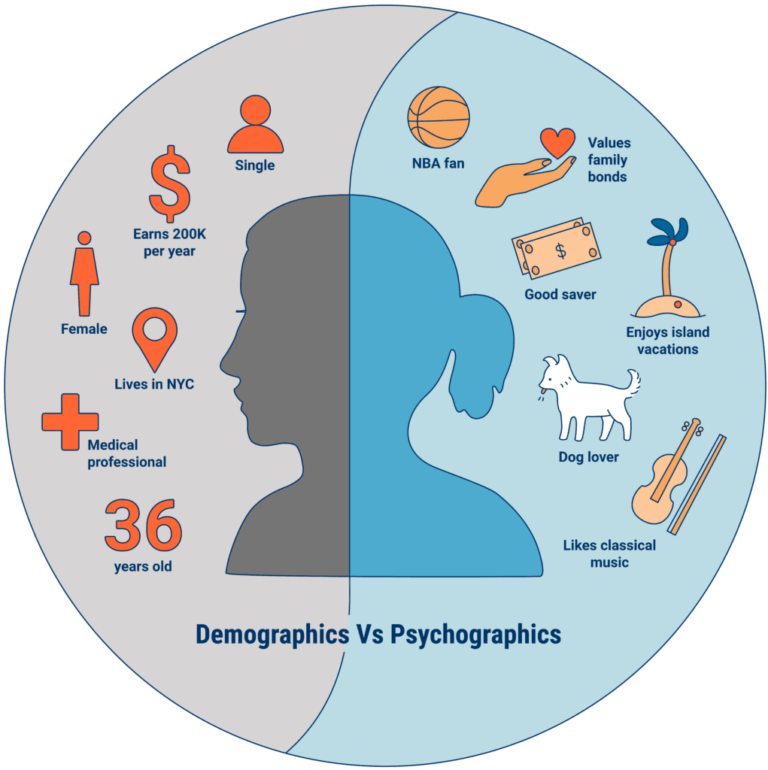
You may notice that these characteristics revolve around a person’s attitudes, habits, and interests.
They concern the personality, values, and personal preferences behind using a product or service or caring about a particular company.
The three main areas you should look into when determining psychographic characteristics are a person’s:
- Interests
- Activities and hobbies
- Attitudes and opinions
Psychographic characteristics are used to get to know your potential customers on a more personal level, but both these and demographics are equally important while defining your audience.
By clearly defining these two groups of characteristics, you can get a better idea of your ideal customer, create a buyer persona, and pick beta testers who fit it best.
As individuals from your target audience represent people most likely to use your app in the future, picking beta testers from this group is ideal—you can benefit from their comments and suggestions the most.
Decide how to promote your beta test
Attracting a large enough number of interested users that fit your target audience to be your beta testers can be a slow and frustrating process.
This process can be especially challenging if you don’t have an existing user base, like when you are launching an app for the first time.
To have the best chance of attracting the right people to your beta test program, you should consider running a promotional campaign before your software is launched.
This practice can create hype and excitement around your app and attract a lot of people who can’t wait to test out your product.
There are multiple ways to promote your beta test phase:
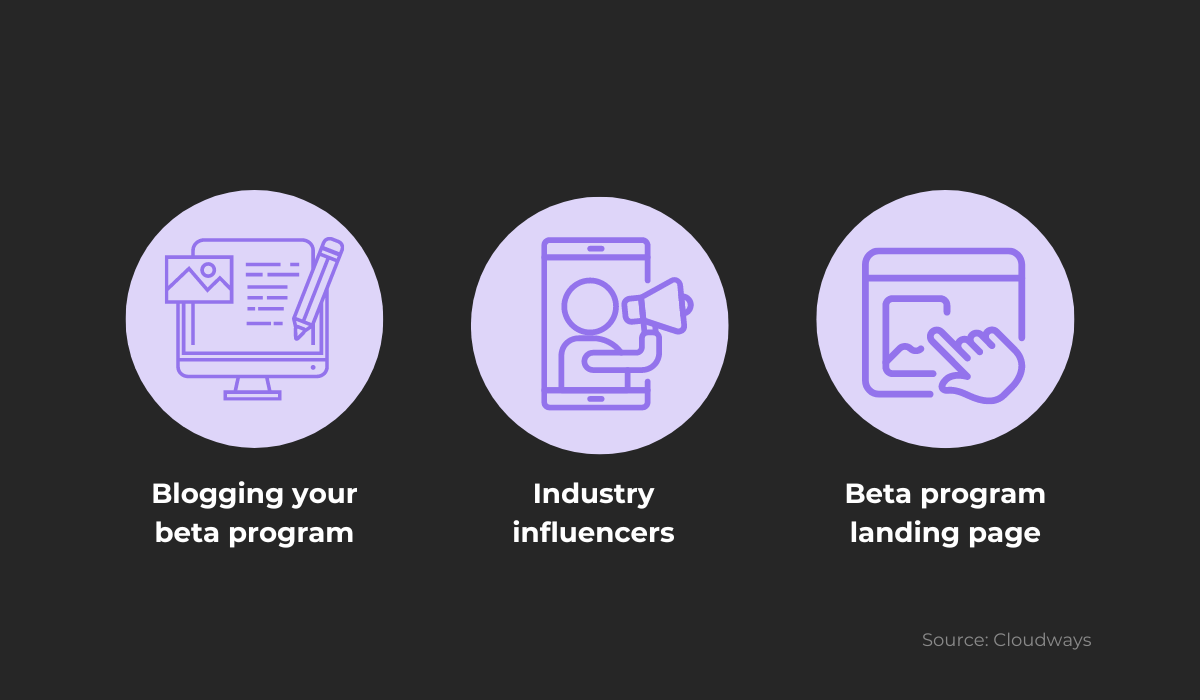
Announcing your beta program through a blog post is a great way to attract traffic and encourage discussion around your beta launch.
To use this method most effectively, you can even start blogging about it a few months before you announce your program—this way, you can slowly build up interest in your beta launch until it eventually begins.
Another way to attract many people is to contact influencers before you start your beta test and have them try out your app beforehand.
If they are interested in your app, they can promote the beta testing program to their followers and encourage them to sign up—later on, you can even use their testimonials as marketing when you finally release your app after the beta phase.
A simple and attractive landing page is another effective way to gain a list of potential beta testers.
Like blogging, you might want to create your page early on and use it to start gathering contact information from interested individuals.
Here’s an example of a simple but practical landing page:
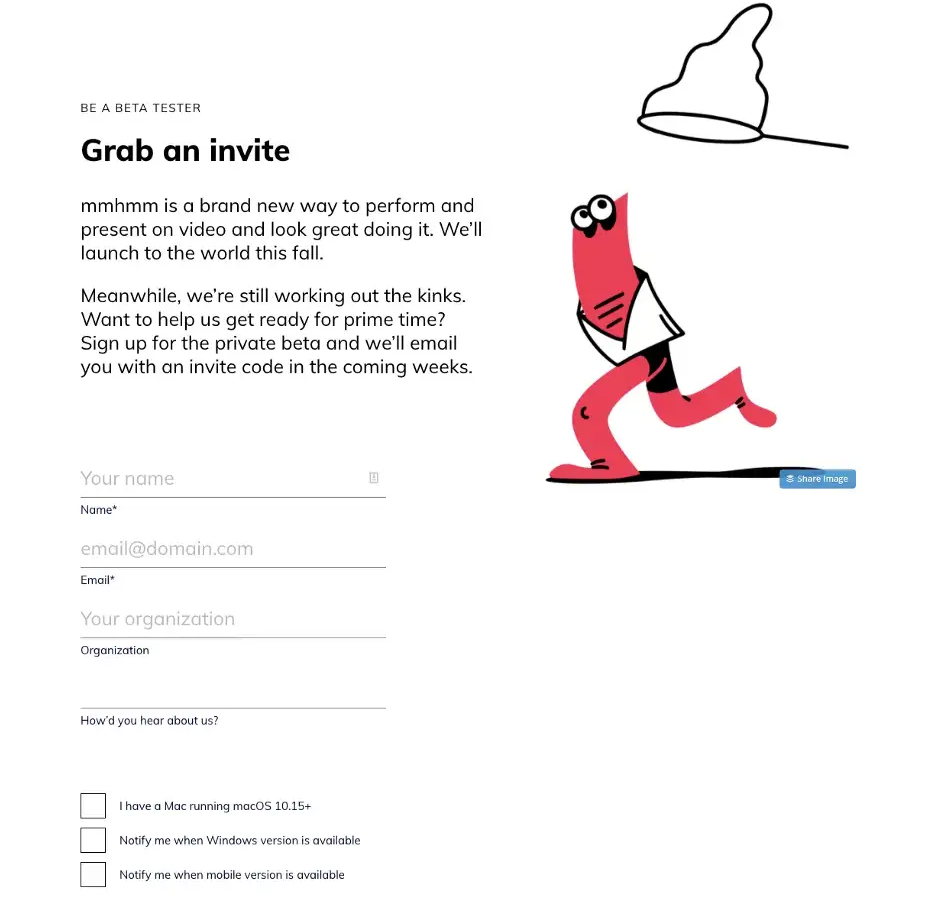
The purpose of this landing page for the now-released Mmhmm app was to collect as many interested individuals to sign up for the beta with only minimal operating system requirements for joining.
After collecting a list of interested individuals, the team at Mmhmm would be able to select the ones that fit their target audience best and have them join their beta testing program.
These are just a few marketing strategies you can use, as there are many more options available for your consideration.
Running a successful promotional campaign is one of the most effective ways to attract individuals to your beta test program, and it will help you ensure you have the right number of relevant users to test your app.
Follow a beta test plan template
After you’ve successfully attracted enough people to be your beta testers, another thing you may want to do is to create a clear and concise beta test plan by following a clear template.
You can make your beta test plan in any way that suits your company, but it will usually contain the following essential elements.
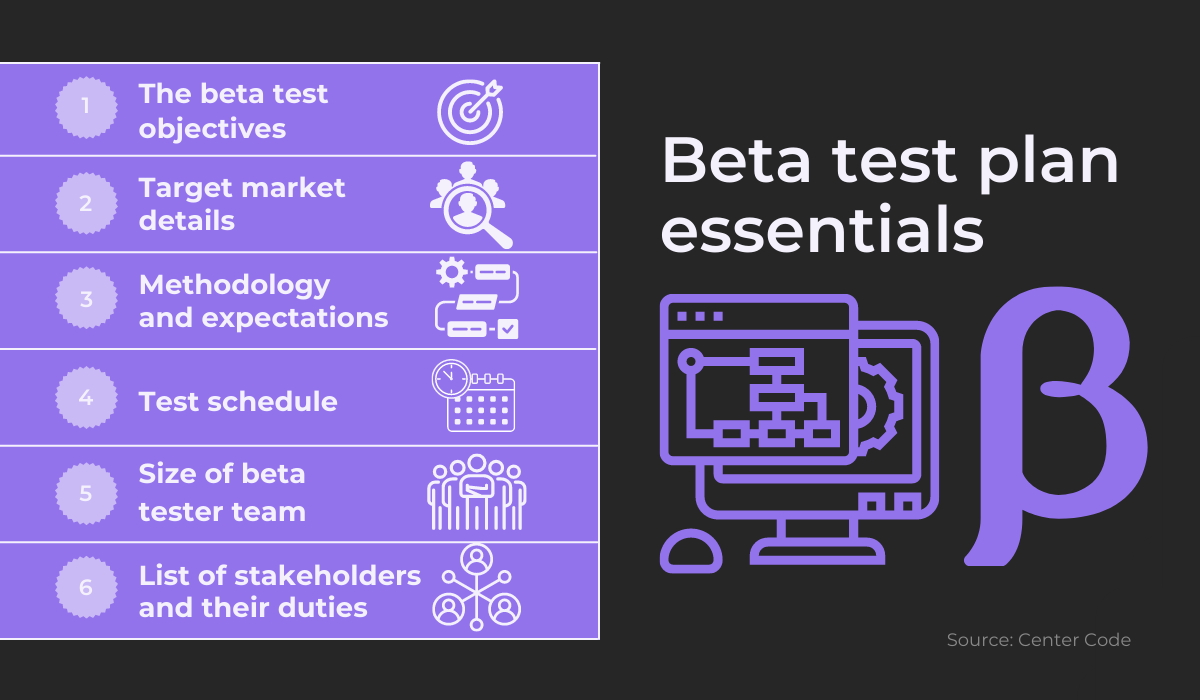
While there are other elements you can include in your plan, these are the crucial ones that can help your beta test phase run as smoothly as possible.
Using a test plan template is one way to make creating a beta plan more straightforward and ensure that you include these essential elements in your program.
By following a test plan template, your company can better cover all of its bases when planning its beta test.
The table of contents for one such template is the following:
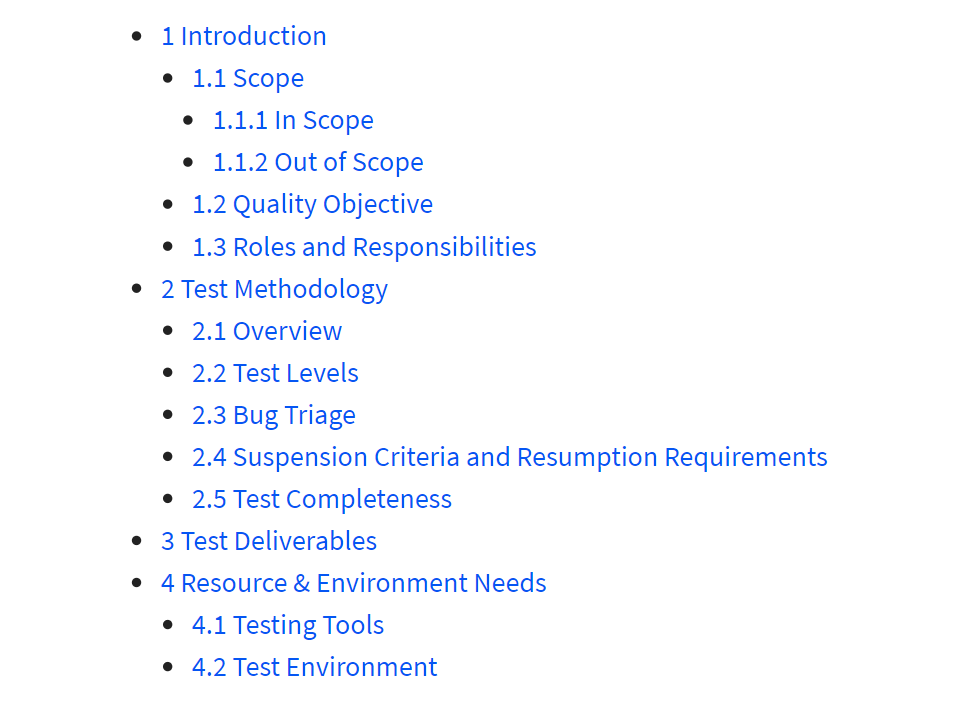
This image shows a more detailed list of elements that you might include in a test plan for both in-house and external testing, and you can use some pointers from it for your beta program.
For example, your plan should clearly state which areas, functions, and features of the app need to be tested and which shouldn’t be—these make the scope of your beta test.
Through this practice, you will focus the effort of beta testers and ignore the areas of the app that you’ve already thoroughly tested.
Your plan should include the full approach which should be followed when testing—any tools needed, the device requirements for testing the app, what information the report and feedback submitted by your beta testers should contain, etc.
Finally, you should include the criteria for ending the test—whether you will set a time limit on the beta program, or use some other testing criteria for completion.
By having a well-structured plan, you can make it easier for beta testers to know what you expect from them and make your organization use the feedback from the testers most effectively in their efforts to improve your app.
Choose which tool to gather feedback with
When planning your beta test phase, you need to take into account the tools you are going to use to interact with your testers.
More specifically, you might want to consider the tools used for communicating with beta testers, as well as the tools for getting feedback from them.
The communication solutions are pretty straightforward—you can use email, online forums, chat apps, etc., to send and receive messages from participants.
The more crucial decision is figuring out how you’ll receive feedback from beta testers.

Capture, Annotate & Share in Seconds with our Free Chrome Extension!
Setting up a proper feedback channel is essential for a successful beta test program—after all, it’s through tester feedback that you receive reports about issues and suggestions for improving your app.
One way to collect feedback is to use a third-party solution, like our own tool, Shake.
Shake is a bug and crash reporting tool that automates a lot of the hassle beta testers might face, and it does that by eliminating the need to write up reports and gather bug data manually.
Testers can just shake their phone when they encounter an issue, and Shake will automatically collect relevant data and create a comprehensive report.
Here’s an example of such a report:
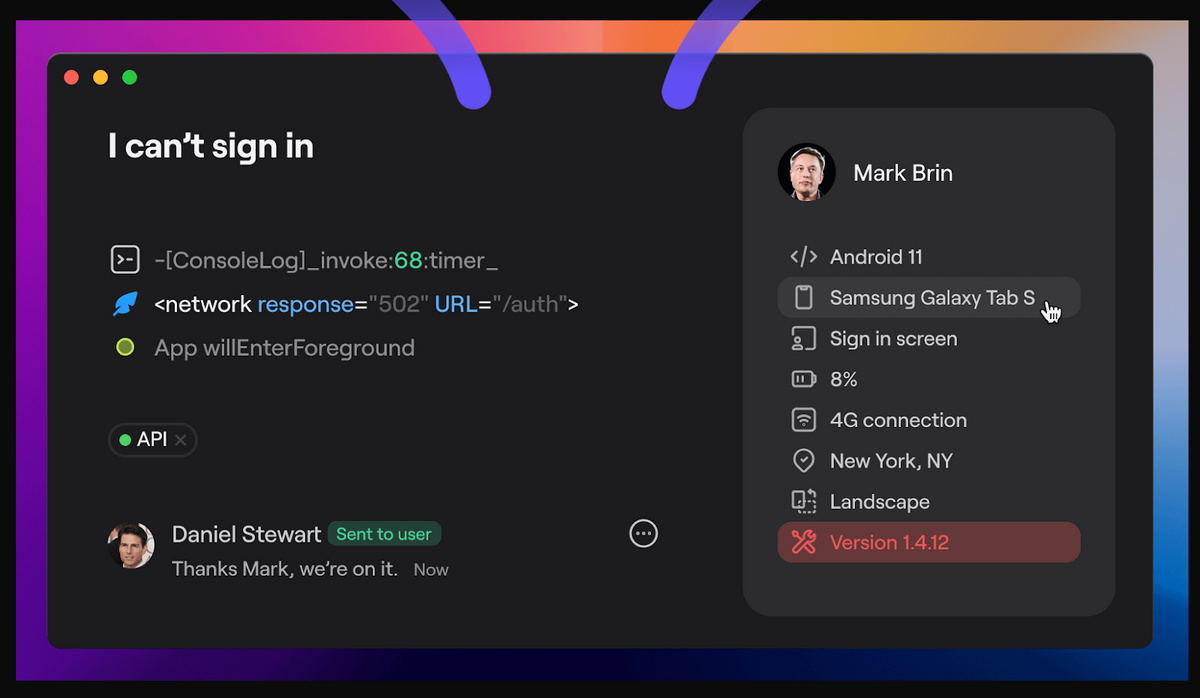
One of the main benefits of Shake in gathering feedback is that it allows it to be submitted without testers having to leave your app to write you an email or fill out a survey.
Furthermore, Shake offers several integrations with other platforms that can make receiving tester feedback more straightforward for your company.
Shake can integrate with Slack or Trello and many other platforms that your company might already be using for communication.
For example, here’s what information might be contained in a Slack notification:
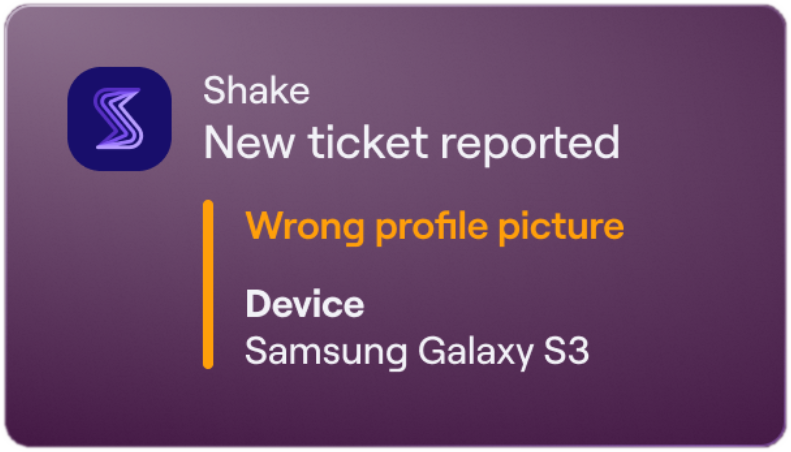
After feedback is sent by beta testers through Shake, your team can be immediately notified on their preferred platform that a report was submitted.
A tool like Shake can make sending feedback easy for beta testers, while also helping your company receive it more efficiently.
Conclusion
Creating a beta test program can be a confusing and frustrating process as you have to balance its many different aspects during the planning stage.
Missing a crucial step while planning can make it hard for your beta testers to test your app without hassle and make you gain less relevant data and feedback as a result.
By reading this article, you’ve hopefully gained some knowledge about what you need to consider before you begin your beta phase.
Using these tips, you can be more confident that this final development stage will be a success and run without issues from start to finish.

